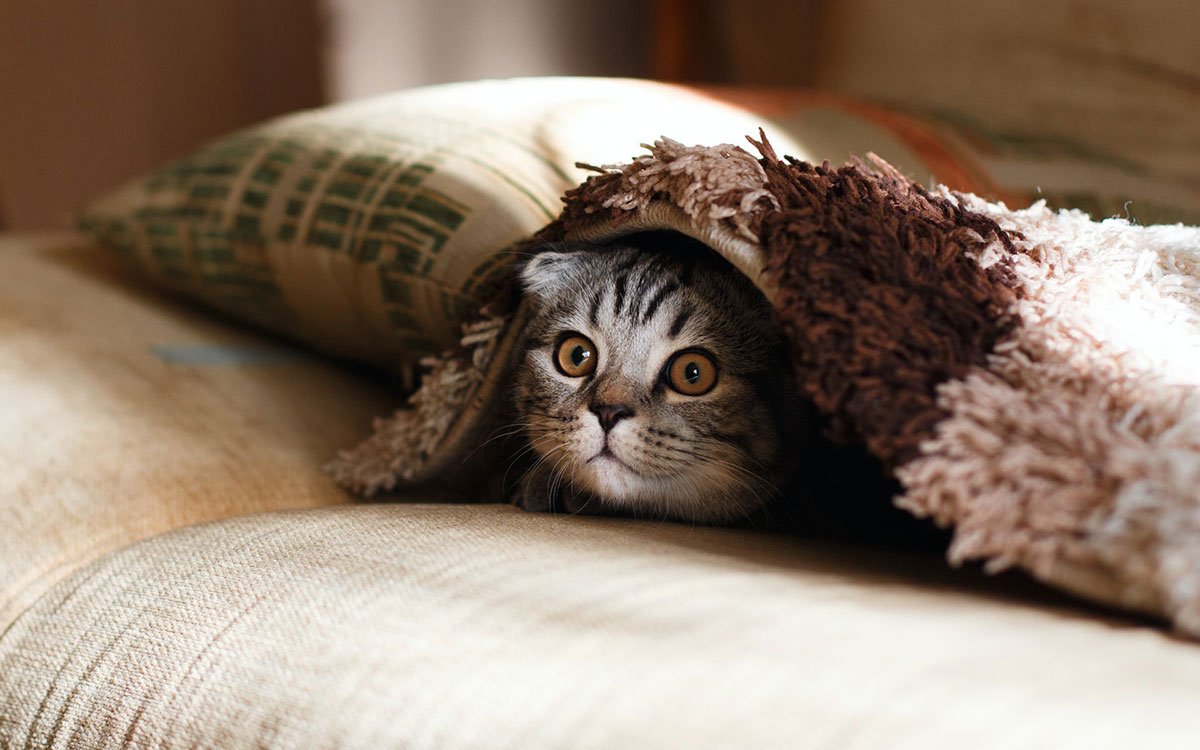Did you know cats can show up to 16 different body postures and over 100 vocal sounds? Learning their language is key to a closer bond with them. This guide will dive into cat body language, teaching you to understand their subtle signals.
Key Takeaways
- Cats use body postures, tail movements, and sounds to show their feelings and plans.
- Getting their signals right helps you meet their needs and act right.
- Knowing when they’re stressed, happy, or in different situations can make your bond stronger.
- Age, breed, and personality can change how a cat communicates, so watch your cat closely.
- Respecting their signals and making a calm space can build trust and deepen your bond.
Introduction to Understanding Cat Body Language
Cats are often seen as mysterious and distant. But, they are always talking to us through their body language. By learning to interpret cat signals and understand feline communication, we can get a peek into their world. This helps us meet their needs and grow our bond.
Why it’s important to read feline signals
Cats show their feelings through their body language. The importance of reading cat body language is huge. It lets us respond right and avoid stress or fights.
Cats communicate through subtle cues
Cats use many small signs to share their thoughts and feelings. These include ear positions, tail movements, and pupil size. By learning to interpret these feline signals, we can understand what they’re saying and change how we act.
“The more we understand about cat communication, the better we can meet their needs and build a stronger bond.” – Dr. Jane Doe, Veterinary Behaviorist

Learning to read interpreting cat body language is a journey. But, it’s a journey that’s very rewarding. By paying attention to the small details of feline communication, we can make our relationship with our pets better and more fulfilling.
Understanding Cat Body Postures
Cats communicate in many ways, not just through meows and purrs. Their head, ear, and tail positions tell us a lot about their mood. Let’s dive into the different cat body postures and what they mean, helping you understand your cat better.
The position of a cat’s ears is key. Ears up and forward mean they’re calm and listening. But ears back against the head might show fear or anger. The tail’s angle also matters. A high tail shows confidence, while a low or tucked tail might mean they’re anxious or feeling submissive.
A cat’s posture tells us about their comfort and confidence. A relaxed cat will have a soft back and a swishing tail. But if they’re tense or scared, their back will be hunched, paws tucked in, and tail stiff.
Learning about cat body postures helps us understand our cats better. It lets us know when they’re feeling playful, curious, or stressed. Knowing this can strengthen our bond with them.

| Cat Body Posture | Meaning |
|---|---|
| Upright, forward-facing ears | Calm, attentive |
| Flattened, backward-facing ears | Fear, aggression |
| Tail held high and erect | Confidence |
| Low-hanging or tucked tail | Anxiety, submission |
| Relaxed, fluid stance | Comfort, contentment |
| Rigid, tense posture | Threat, unease |
By learning about cat body postures and feline body language, we can better understand our cats. This helps us build stronger, more loving relationships with them.
Decoding Cat Tail Movements
Cats are experts at talking without words, and their tails are key. The way their tail moves tells us a lot about their mood and what they want. From the tail’s position to its tiny twitches, knowing cat tail movements helps us understand our cats better.
Tail Up Versus Tail Down
A cat with a high, straight tail usually feels confident, curious, or friendly. But if their tail is low or tucked in, they might be scared, anxious, or upset. Watching how your cat’s tail is held can help you guess how they’re feeling.
Twitching and Swishing Tails
The speed and how often a cat’s tail moves also tells us a lot. A slow tail swing or twitch might mean they’re annoyed or uncomfortable. A fast, agitated tail flick often shows they’re stressed or upset. Knowing these subtle tail signals helps us guess what our cats might do next.
| Tail Position | Meaning |
|---|---|
| Upright and straight | Confidence, curiosity, or friendliness |
| Tucked low or close to the body | Fear, anxiety, or aggression |
| Slowly swishing or twitching | Annoyance or discomfort |
| Rapid, agitated tail-flick | Stress or provocation |
By watching and understanding cat tail signals, we learn a lot about our cats’ feelings. This helps us meet their needs better. Paying attention to these small signs can make our bond with our cats stronger and more loving.

Reading Cat Ear Positions
Understanding a cat’s body language is key to a strong bond. The position of their ears is a big clue to their mood. By watching how a cat’s ears move, we can learn a lot about their feelings and plans.
Ears Forward versus Ears Back
When a cat’s ears point forward, they’re alert and focused. This shows they’re interested in what’s happening around them. But, if their ears go back, it might mean they’re scared, stressed, or trying to protect themselves.
By noticing how a cat’s ears change, we can understand their cat ear signals better. This helps us connect with them more deeply. It makes our relationship with our cat ear positions more rewarding.

“Paying attention to your cat’s ear movements can help you better understand their current mood and needs.”
Learning to read cat ear signals is important for a closer bond with our cats. By noticing their cat ear positions, we can guess their actions. This way, we can make them feel safe, happy, and loved.
Cat Vocalizations and What They Mean
Understanding a cat’s body language is key, but their sounds are just as important. Each sound, from the meow to the hiss or growl, tells us a lot about their feelings and plans.
Meows, Purrs, and Chirps
Cats make many sounds to talk to us and other cats. A meow can mean hello, “I need food,” or “Pet me.” A soft purr shows they’re happy and relaxed. A chirp or trill usually means they’re excited or curious.
Hisses, Growls, and Yowls
Harsher sounds like hisses, growls, and yowls mean they’re upset, scared, or angry. A hiss warns you to stay away. A growl tells you to leave them alone. A yowl might mean they’re upset or marking their territory.
“Understanding your cat’s vocalizations is crucial for building a strong, trusting bond. By learning to interpret their sounds, we can better meet their needs and respond appropriately to their emotional states.”
By learning about cat vocalizations, we can understand our cats better. This helps us interpret cat meows and purrs and strengthens our bond with our feline friends.

Understanding cat body language
Learning to read cat body language is key to understanding them better. By noticing the feline communication cues, we can connect more deeply with our cats.
Cats show many emotions through their body language. A proud cat stands tall, while an upset cat has ears back and a twitchy tail. Each movement tells us something important.
Let’s explore the guide to cat body language together. We’ll learn how to understand feline communication cues better.
Posture and Positioning
A cat’s posture tells us a lot about their mood. A relaxed cat stands tall, showing confidence. But a crouched cat might be scared or angry.
Looking at a cat’s legs, back, and head helps us guess their mood. It’s like reading a secret language.
Tail Movements
The tail is a key part of a cat’s language. A swishing tail means they’re annoyed. But a wagging tail shows they’re happy and playful.
Knowing how to read a cat’s tail is important. It helps us understand their feelings better.
Ear Positions
A cat’s ears also tell us a lot. Ears up and forward mean they’re interested. But ears back show fear or stress.
By understanding body postures, tail movements, and ear positions, we get a full picture of cat communication. This knowledge helps us meet our cats’ needs and strengthens our bond with them.
Every cat is different, and their way of communicating can change. By watching your cat closely and learning their unique ways, you’ll become an expert in interpreting feline communication cues.
Recognizing Signs of Feline Stress
Cats can feel stress and anxiety just like humans. It’s important to know the signs they show when they’re feeling overwhelmed. By learning to read these cat stress signals, we can help them better. This helps us understand their anxiety and body language when they’re stressed.
Dilated Pupils and Flattened Ears
One key sign of stress in cats is when their pupils get big. If a cat’s eyes look wide and their pupils are big, they’re likely feeling scared or anxious. They might also flatten their ears against their head, showing they’re not comfortable.
| Stress Signal | Meaning |
|---|---|
| Dilated Pupils | Increased arousal, fear, or anxiety |
| Flattened Ears | Attempt to appear smaller and less threatening |
By paying attention to these signs, we can understand our cats’ feelings better. We can then help them feel safe and secure. Recognizing and addressing these cat stress signals is key to a strong bond with our feline friends.

“Paying attention to your cat’s body language can help you identify when they are feeling stressed and take steps to make them more comfortable.”
Interpreting Signs of Cat Affection
As pet owners, we often wonder how our feline friends show their love. Cats don’t display affection like dogs do, but they have their own ways. By learning to read cat body language for bonding, we can understand their feline love language. This helps us build a deeper, more fulfilling relationship with our furry friends.
One common sign of cat affection is the slow blink. When your cat looks at you and slowly closes and opens their eyes, they’re showing trust and contentment. This gesture means they feel safe and comfortable with you.
Another sign is when your cat gently head butts or cheek rubs you. Cats have scent glands on their faces. By rubbing their heads against you, they’re marking you with their scent. This is their way of claiming you as their own and showing they’re attached to you.
- Kneading or “making biscuits” with their paws is a sign of comfort and relaxation, often accompanied by a soft purr.
- Sitting or lying near you, or even on your lap, indicates that your cat enjoys your company and feels secure in your presence.
- Bringing you small “gifts,” such as a favorite toy or a dead mouse, is a way for your cat to show their affection and care for you.
By understanding these cat affection cues and feline love language, we can strengthen our bond with our cats. Remember, every cat is unique. So, it’s important to observe your cat’s body language and behavior to learn their special way of showing love and attachment.
Observing Cat Body Language in Different Situations
Cats change how they act based on the situation. Knowing these changes helps us understand our cats better. This way, we can strengthen our bond with them.
Greeting Visitors
When someone new comes home, your cat’s behavior changes. They might come closer slowly, with their head down a bit. Their tail is high but not too stiff. This shows they’re curious and a little unsure.
If your cat is comfortable, they might say hello with a relaxed tail. They might even rub against your legs, looking for love and attention.
During Playtime
Playtime is a great time to see how your cat feels. A playful cat will crouch low, tail twitching, ready to jump. Their eyes will get bigger, and they might make happy sounds.
When playtime ends, your cat will show it too. They’ll move slower, tail swishing gently. This means they’re ready to take a break.
Learning about cat body language helps us understand our pets better. This way, we can meet their needs and build a stronger bond with them.
“The more you understand about the subtleties of cat communication, the better you’ll be able to respond to your cat’s needs and wants.”
Age and Breed Differences in Cat Communication
Understanding cat communication is key. Not all cats talk the same way. Age, breed, and personality play big roles in how cats communicate. Knowing these differences helps us connect better with our feline friends.
Communication Shifts with Age
Kittens and older cats have unique ways of talking. Kittens meow a lot, using high-pitched sounds. As they grow up, they talk less and use body language more. Senior cats might start meowing like kittens again, showing we need to understand each cat’s life stage.
Breed-Specific Behaviors
Each cat breed has its own way of talking. Siamese cats are very chatty, making lots of sounds. Russian Blues are quieter, using body language to talk. Knowing these traits helps us understand what our cats are saying.
| Breed | Typical Communication Styles |
|---|---|
| Siamese | Vocal, frequent meowing and yowling |
| Russian Blue | Subtle, reliance on body language |
| Maine Coon | Moderate vocalizations, expressive body postures |
| Ragdoll | Calm, low-key communication, enjoys being held |
By adapting our interpretation of feline signals to account for age and breed differences, we can ensure that we effectively connect with cats of all kinds, strengthening the bond and understanding between humans and our feline companions.
Building a Stronger Bond with Your Cat
Learning to read cat body language helps us understand our cats better. It also strengthens our bond with them. We’ll look at how to use this knowledge to respect our cat’s needs and build a fulfilling relationship.
Respecting Your Cat’s Signals
Cats are sensitive creatures that use subtle cues to show their feelings. By responding to cat body language and understanding feline communication for better relationships, we can make our cats feel safe and loved. Here are some tips:
- Respect your cat’s personal space and don’t force interactions when they seem uncomfortable or disinterested.
- Pay attention to their ear, tail, and body posture to gauge their mood and adjust your behavior accordingly.
- Provide your cat with plenty of hiding spots, perches, and vertical space to allow them to retreat and feel secure when needed.
- Engage in gentle, positive interactions that your cat initiates, such as gentle petting or playtime.
By respecting your cat’s signals and building a bond based on trust, you’ll create a rewarding relationship with your cat.
“The better we can understand our cats’ body language, the more we’ll be able to recognize their needs and respond accordingly, strengthening the bond between us.”
Common Misconceptions About Cat Body Language
Exploring feline communication is key. We must clear up common myths that confuse cats and their owners. This way, we can better understand how cats show their feelings.
Many think a cat’s tail shows their mood. But, a cat’s tail is just one clue. Cats also use ear position, body posture, and to share their emotions. Relying only on the tail can lead to misunderstandings.
Some believe cats are always aloof. But, cats are social and love their human families. Signs like slow blinks and purring show their affection. Recognizing these signs can strengthen our bond with our cats.
Home dog training: Effective techniques for basic obedience exercises
Home dog training: Effective techniques for basic obedience exercises
FAQ
Why is it important to understand cat body language?
Learning to read cat signals helps us understand our feline friends better. It lets us meet their needs and respond to their moods. This strengthens our bond with them.
How can cats communicate through body postures?
A cat’s posture tells us a lot about their mood. From head and ear positions to tail angles, each posture has its own meaning. Knowing these helps us understand their emotions and intentions.
What can a cat’s tail movements tell us?
A cat’s tail is very expressive. Its movements show their mood and intentions. A high, straight tail means they’re happy. A low, swishing tail might mean they’re upset.
How do a cat’s ear positions communicate their emotional state?
A cat’s ears show their emotional state. Alert ears mean they’re ready to listen. Flattened ears can mean they’re scared or upset. Watching their ears helps us understand their mood and needs.
What do different cat vocalizations mean?
Cats use sounds to communicate too. Meows, hisses, and growls all mean different things. Each sound gives us insight into their feelings and what they want.
How can I recognize signs of stress in my cat?
Cats can get stressed just like people. Look for signs like dilated pupils and flattened ears. These are common signs they’re feeling overwhelmed.
What are some signs of affection in cats?
Cats show love in their own way. Slow blinks and head butts are signs of affection. Learning these gestures helps us connect with them on a deeper level.
How might a cat’s body language differ in different situations?
Cats adjust their body language based on the situation. Their greeting style might differ from their playtime behavior. Understanding these cues helps us build trust with them.
Are there any age or breed differences in cat communication?
Yes, communication styles vary among cats. Age, breed, and personality can influence their body language and sounds. Adapting to these differences helps us connect with cats of all kinds.
How can I use my understanding of cat body language to build a stronger bond with my cat?
Mastering cat body language helps you understand their needs and emotions. It also strengthens your bond. By respecting their signals and meeting their needs, you can create a fulfilling relationship.
What are some common misconceptions about cat body language?
It’s important to clear up misconceptions about cat body language. This helps us understand them better and avoid misunderstandings. By doing so, we can approach our feline friends with empathy and accuracy.






